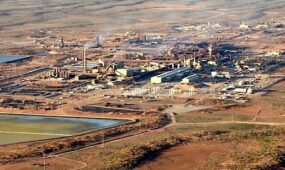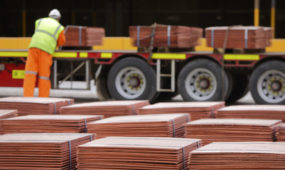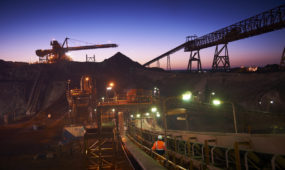Hi-tech tomato source launches in South Australia
Mining & Resources
A TOMATO farm that relies on the sun and seawater to produce more than 15,000 tonnes of fruit a year has been officially launched in South Australia.

Sign up to receive notifications about new stories in this category.
Thank you for subscribing to story notifications.
Sundrop Farms’ sustainable facility in Port Augusta includes four five-hectare climate controlled greenhouses, a desalination plant and concentrated solar power system comprised of a 127-metre high tower and more than 23,000 mirrors to reflect the sun’s energy.
The $200 million commercial facility is the first of its kind in the world, employing about 175 people and producing more than 15,000 tonnes of tomatoes annually using solar power and seawater.
A ceremony was held at the plant, which is about 300km north of the South Australian capital Adelaide yesterday.
Sundrop Farms Founder and CEO Philipp Saumweber (pictured below) said the Port Augusta development demonstrated the company’s unique agribusiness model that benefitted people, planet and long-term, sustainable profits.
“With growing resource constraints our innovative model harnesses renewable inputs, such as seawater and sunlight, to de-couple food production from the finite inputs of freshwater, fossil fuels and land,” he said.
Sundrop Farms has secured a 10-year deal to supply Coles supermarkets with truss tomatoes nationally.
Since the first week in June, Sundrop Farms has delivered tomatoes to supermarkets in Victoria, New South Wales and South Australia. Now up to eight trucks a day are leaving the facility to freight tomatoes to supermarkets across Australia.
Founded in 2009, Sundrop Farms is a pioneer in sustainable agriculture, growing high-value fruits and vegetables using renewable inputs.
Construction of the commercial facility began in March 2015 following a five-year pilot project in Port Augusta from 2009.
Port Augusta’s proximity to seawater at the top of Spencer Gulf coupled with its warm climate and abundant sunlight make it an ideal location for the project.
The commercial plant integrates solar power, electricity generation, fresh water conservation and production, climate control, and hydroponics to enable the year-round production at high yields.
The 18-month project included construction of the four greenhouses each comprising of more than 20,000 panels of glass; a 127-metre solar tower, a solar field consisting of more than 23,000 mirrors; and storage for 115 million litres of water.
The 127-metre solar tower consists of five shaft sections, each weighing over 80 tonnes. To complete the tower, the biggest lift ever undertaken in Australia raised the 234-tonne solar receiver to its pinnacle.
All 23,000 mirrors were ready to concentrate the sun’s power on the solar tower in June. This produces steam to drive onsite processes, and heat to run the desalination unit to create 1 million litres of fresh water a day.
In 2014, global private equity firm KKR partnered with Sundrop Farms, investing more than $100 million to enable the expansion in Australia and abroad.
The opening was attended by South Australian Premier Jay Weatherill, who said the project highlighted the state’s appetite for commercialising world leading technologies.
“This state-of-the-art development is a massive boost for Port Augusta and the Upper Spencer Gulf, creating almost 200 jobs and heralding the start of an exciting new industry for the region,” he said.
“It is yet another example of a world-leading company making a long-term investment in this state and I look forward to seeing the wide-scale benefits the project will bring over coming years.“
The South Australian Government supported the project through a $6 million grant from the Major Projects Program of the Regional Development Fund.”
Sundrop Farms has offices in London and Adelaide, and farms in Australia, Portugal and the United States.
Jump to next article



